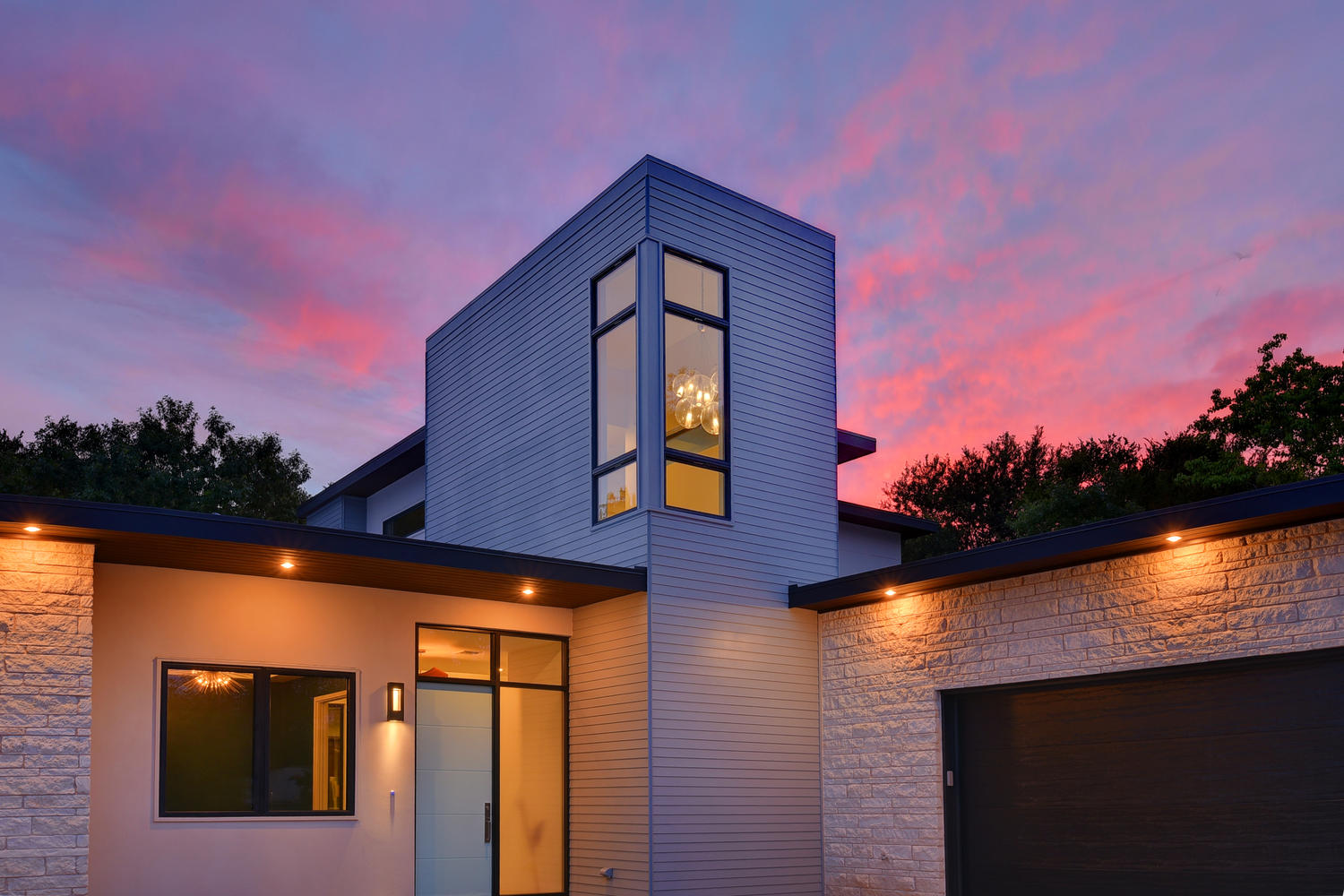Building a custom home is an exhilarating prospect. Unlike searching for an existing home on the market, building a custom home means that you have the opportunity to get exactly what you want. When it comes to custom home construction, it’s easy to get hung up in the aesthetics, because that’s the most exciting part.
However, durability is one element to custom home construction that’s often overlooked. Of course, it’s essential to build your home on budget and in the style you like. But, if it’s not built to last, all the work, money, and time won’t seem worth it in the end.
Fixing problems later is much more complicated than constructing them correctly from the start. If you design and build your custom home with durability in mind, you’ll set yourself up for long-term happy homeownership.
So, what’s the best way to construct a custom home for long-lasting durability? Here are four components that comprise a beautiful, durable home.

Design by Urbane Design
1. Choose the Correct Frame
A home’s frame is like its skeleton. Like a human body, if something in the skeleton is in bad shape, the body can’t stand or operate properly. Durable construction truly begins with the foundation, wall, and frame construction.
There’s a relatively frequent debate over metal versus wood studs. While both options have merit, they both also have flaws. Wood frames, for instance, aren’t great for fire safety or wind durability. They also can’t stand up to pests or moisture. Steel frames aren’t widely used for residential homes, and so construction, insulation, and safety can be challenging to achieve.
So, for long term durability on your custom home, the best bet is to go with ICF construction. It’s a relatively new construction technique that uses insulated concrete forms versus standard building material. The construction is simpler, thanks to the interlocking blocks, and the results are impressive.
Homes built with ICF construction are energy-efficient and resistant to harsh weather. More importantly, they’re durable and resist moisture, termites, and fire damage. So, if you’re looking for durability and other advantages, go with ICF construction for your home’s skeleton.
2. Don’t Underthink the Roof
The roof is another area of the house that’s incredibly important, but easy to overlook. You see, the roof is your home’s first defense against rain and the hot summer sun. However, many homeowners opt for either the cheapest option or the most beautiful without ever considering durability.
Asphalt shingles are the most affordable shingle option out there. The problem is that even light winds can blow them off. Heavy rains and storms can do significant damage. Asphalt also doesn’t do too well in the heat, and in fact, can cause your electricity bill to be higher because it absorbs heat rather than reflects it.
Gorgeous roofing choices, like cedar shakes and slate tiles, are popular choices thanks to their appearance. Unfortunately, both of these options aren’t the best for long-term durability. Cedar shakes have all the familiar issues of wood, like its susceptibility to moisture and pest damage. Slate tiles are tricky to install and often result in moisture build-up and subsequent damage, causing time-consuming and costly repairs.
If you’re looking for durability, you have to look into asphalt shingle alternatives. Doing so will ensure that you have a long-lasting and durable roof instead of just a cheap or visually appealing one.
3. Siding Choice Matters
While framing, roofing, and siding aren’t the most exciting parts of designing your custom home, they’re essential for durability. It’s not difficult to get swept up in the excitement of designing your custom home and forget that these choices can directly prevent or cause future headaches.
So, let’s chat about siding. Which choices are the best for durability? Brick and stone siding is by far the most durable, as it lasts more than seventy-five years when properly installed and maintained. It can be a little costly, though, so there are other options, too.
Fiber cement, vinyl, and engineered wood are all siding choices that are durable, cost-effective, and visually appealing.
4. All the Little Details Add Up
Aside from the tips mentioned above, every single decision you make about your custom house should have durability in mind. Both inside and out, every material and technique needs to be considered with the long-term in mind. From roof and house colors to flooring materials, it’s crucial to think about longevity and durability, too.
For instance, the best color choice for outside your home, you’ll want to choose lighter, organic ones. Why? Scientifically speaking, the amount of UV rays reflected or absorbed by your house’s color, and the effect of the sun on the color will determine how long your paint will last.
For flooring, you may love the look of bamboo or untreated hardwood, but those flooring choices aren’t very durable. You’ll have to re-do and regularly repair it to keep up with them. You see, every single choice plays into your home’s durability.
Construct a Long-Lasting Home Today
These are a few ideas to build a custom home with durability in mind. Remember, it all starts with a qualified builder. Ask questions, and do your research, and you’ll be in your durable, dream home in no time.
Written by Matt Lee
Matt Lee is the owner of the Innovative Building Materials blog and a content writer for the building materials industry. He is focused on helping fellow homeowners, contractors, interior designers and architects discover materials and methods of construction that save money, improve energy efficiency, and increase property value